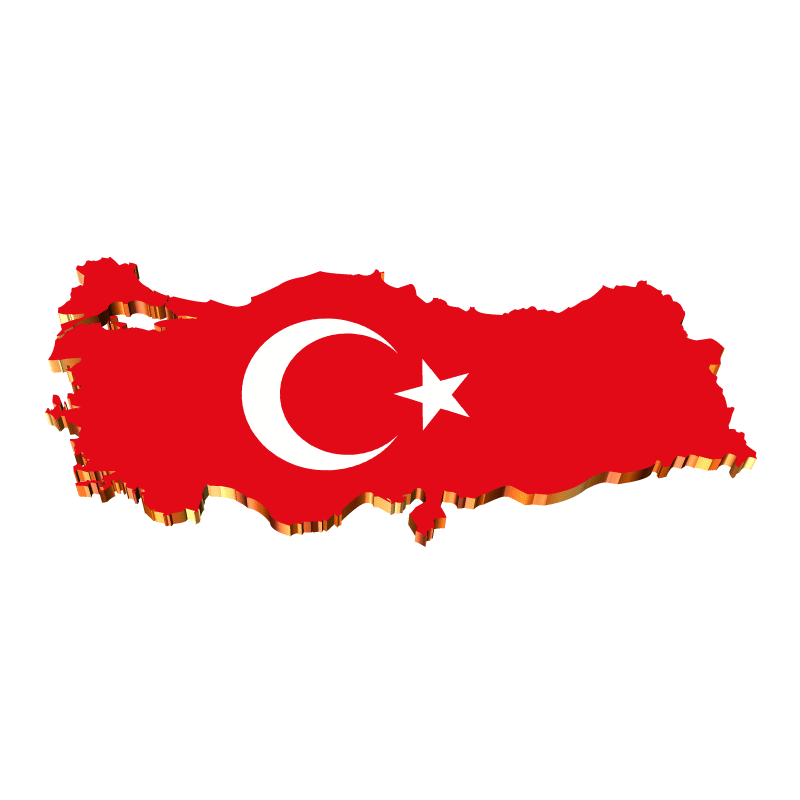Decorating walls in Istanbul can blend traditional and modern styles, reflecting the city’s rich cultural heritage and contemporary trends. Here are some popular wall decoration ideas and techniques you can consider:
Creating a 6500-word article on wall decoration in Istanbul can be both comprehensive and detailed. Below is a structured outline, followed by the beginning of the article. Given the scope, I’ll draft the initial section and outline the subsequent parts for you.
Article Outline
- Introduction
- Overview of Istanbul’s rich cultural heritage
- The significance of wall decoration in Istanbul’s aesthetic landscape
- Historical Context of Wall Decoration in Istanbul
- Ottoman Influence
- Byzantine Influence
- Evolution of styles through different eras
- Traditional Wall Decoration Techniques
- Iznik Tiles
- History and significance
- Production process
- Modern usage
- Arabic Calligraphy
- Historical context
- Key styles and examples
- Integration in modern interiors
- Carved Wooden Panels
- Historical significance
- Techniques and craftsmanship
- Textile Hangings
- Kilims, Suzanis, and other textiles
- Cultural importance
- Modern Wall Decoration Trends in Istanbul
- Murals and Street Art
- Popular artists and locations
- Impact on urban aesthetics
- 3D Wall Panels
- Materials and designs
- How they blend with traditional elements
- Metal Accents
- Use of brass, copper, and other metals
- Design inspirations
- Fusion of Traditional and Modern Styles
- Case studies of successful fusions
- Techniques for blending old and new
- Examples of fusion decor in homes and public spaces
- Decorative Techniques and DIY Ideas
- Stenciling and Faux Finishes
- Methods and materials
- Step-by-step guides
- Accent Walls
- Design principles
- Examples and tips
- Sources and Inspirations for Wall Decorations
- Markets and Bazaars
- Grand Bazaar, Spice Bazaar
- Art Galleries and Museums
- Notable locations and their collections
- Local Artisans and Craftspeople
- Finding and working with local talent
- Modern Design Stores
- Where to find contemporary decor items
- Practical Tips for Implementing Wall Decorations
- Budgeting and Planning
- Estimating costs
- Planning the project
- Working with Professionals
- Finding and hiring decorators and craftsmen
- Maintaining and Preserving Wall Decorations
- Tips for long-term care
- Case Studies and Examples
- Famous Istanbul Homes and Buildings
- Detailed look at notable examples
- Personal Stories and Testimonials
- Experiences from homeowners and decorators
- Conclusion
- Recap of key points
- The enduring legacy of Istanbul’s wall decoration traditions
Article Beginning
Introduction
Istanbul, a city straddling two continents, is a vibrant tapestry of cultural and historical influences. Its unique position has made it a melting pot of civilizations, where the East meets the West, and ancient traditions blend seamlessly with modern innovations. This rich cultural heritage is vividly reflected in the city’s architectural and interior design, particularly in wall decorations. From the intricate patterns of Ottoman-era Iznik tiles to contemporary murals adorning the walls of trendy neighborhoods, wall decoration in Istanbul is a testament to the city’s dynamic and diverse aesthetic landscape.
Historical Context of Wall Decoration in Istanbul
The history of wall decoration in Istanbul is as layered and complex as the city itself. The influences of the Byzantine and Ottoman Empires have left an indelible mark on the city’s aesthetic. During the Byzantine era, intricate mosaics and frescoes were prevalent, often depicting religious themes and stories. These can still be seen in landmarks like the Hagia Sophia and Chora Church, where the artistry of the past continues to awe visitors.
The Ottoman period introduced a new dimension to wall decoration with the use of Iznik tiles, Arabic calligraphy, and carved wooden panels. The fusion of Islamic art with local traditions created a distinctive style that has become synonymous with Istanbul’s architectural identity. The Süleymaniye Mosque, Topkapi Palace, and countless other historical buildings showcase these elements, preserving the artistry of a bygone era.
Traditional Wall Decoration Techniques
Iznik Tiles
The production of Iznik tiles began in the town of Iznik (formerly Nicaea) in the 15th century. These hand-painted ceramic tiles are renowned for their vibrant colors and intricate patterns, often featuring floral and geometric designs. The tiles were initially used to decorate mosques, palaces, and other significant buildings, creating visually stunning interiors that reflected the grandeur of the Ottoman Empire.
The process of making Iznik tiles is labor-intensive and requires a high level of craftsmanship. It involves preparing a clay body, glazing, and hand-painting the intricate designs before firing them at high temperatures. This meticulous process results in tiles that are not only beautiful but also durable. Today, Iznik tiles continue to be produced using traditional methods, and they remain a popular choice for those looking to infuse their spaces with a touch of Ottoman elegance.
Arabic Calligraphy
Arabic calligraphy is another significant aspect of traditional wall decoration in Istanbul. This art form, which involves the stylized and harmonious writing of Arabic script, has deep religious and cultural roots. In Islamic tradition, calligraphy is considered a way to convey the divine beauty of the Quranic text, making it a highly revered practice.
Throughout Istanbul, one can find exquisite examples of Arabic calligraphy adorning the walls of mosques, madrasas, and other religious buildings. The Blue Mosque, for instance, features stunning calligraphic inscriptions that enhance its spiritual ambiance. In contemporary settings, Arabic calligraphy is often incorporated into interior design through framed artworks or direct wall applications, blending tradition with modern aesthetics.
Carved Wooden Panels
Carved wooden panels are another traditional element that has been used in Istanbul’s wall decoration for centuries. These panels, often found in the interiors of Ottoman-era buildings, showcase intricate designs and patterns carved by skilled artisans. The use of wood adds a warm, natural element to the decor, and the craftsmanship involved in creating these panels reflects the high level of artistry that characterized Ottoman architecture.
In addition to their aesthetic appeal, carved wooden panels also have practical applications. They are used as decorative screens, room dividers, and even ceiling panels, adding texture and depth to the interiors. The preservation and continued use of these panels in modern interiors highlight the enduring appeal of traditional craftsmanship.
Textile Hangings
Textile hangings, such as kilims and suzanis, are an integral part of Istanbul’s wall decoration tradition. These handwoven textiles are rich in color and pattern, often featuring geometric designs and symbolic motifs. Kilims, flat-woven rugs, are particularly popular and have been used for centuries as wall hangings, floor coverings, and even bedding.
Suzanis, embroidered textiles from Central Asia, are another traditional element that has found a place in Istanbul’s interior decor. These textiles are known for their vibrant colors and intricate embroidery, often depicting floral and vine motifs. Hanging these textiles on walls not only adds visual interest but also brings a sense of history and culture into the space.
Modern Wall Decoration Trends in Istanbul
While traditional elements continue to play a significant role in Istanbul’s wall decoration, modern trends have also made their mark. Contemporary design in Istanbul often involves a blend of the old and the new, creating spaces that are both dynamic and timeless.
Murals and Street Art
In recent years, murals and street art have become increasingly popular in Istanbul, transforming the city’s urban landscape. Areas like Kadıköy and Karaköy are known for their vibrant street art scenes, where large-scale murals by local and international artists adorn the walls of buildings. These murals often reflect social and political themes, adding a contemporary voice to the city’s aesthetic.
Murals are not limited to public spaces; they have also found their way into residential and commercial interiors. Homeowners and business owners alike are commissioning artists to create custom murals that reflect their personal style and enhance their spaces. This trend has brought a fresh, modern edge to wall decoration in Istanbul.
3D Wall Panels
3D wall panels are another modern trend that has gained popularity in Istanbul. These panels add texture and depth to walls, creating a visually striking effect. Available in various materials such as wood, metal, and gypsum, 3D panels can be used to create a variety of designs, from geometric patterns to organic shapes.
The use of 3D wall panels allows for creative expression and can be tailored to suit both traditional and modern interiors. They are particularly effective as accent walls, drawing attention to specific areas and adding a layer of sophistication to the decor.
Metal Accents
Metal accents, such as brass, copper, and stainless steel, are increasingly being incorporated into wall decoration in Istanbul. These materials add a contemporary touch while paying homage to traditional craftsmanship. Metal elements can be used in various forms, including wall sculptures, decorative panels, and even light fixtures.
The combination of metal accents with other materials, such as wood or stone, creates a balanced and harmonious look. This blend of materials reflects Istanbul’s unique ability to merge the old with the new, creating spaces that are both elegant and modern.
Fusion of Traditional and Modern Styles
One of the most exciting aspects of wall decoration in Istanbul is the fusion of traditional and modern styles. This approach allows for creative expression and results in interiors that are unique and captivating.
Case Studies of Successful Fusions
Several notable examples showcase the successful fusion of traditional and modern styles in wall decoration. The Pera Palace Hotel, a historic landmark in Istanbul, seamlessly blends Ottoman design elements with modern amenities. The use of traditional Iznik tiles, combined with contemporary furnishings, creates a space that is both luxurious and historically rich.
Another example is the Soho House Istanbul, a members-only club located in a 19th-century palazzo. The interior design incorporates
Traditional Ottoman Style
- Iznik Tiles: Hand-painted ceramic tiles featuring intricate geometric and floral patterns, often in blue and white. These can be used to create stunning wall panels or borders.
- Calligraphy: Arabic calligraphy, particularly Ottoman script, is an elegant way to decorate walls. This can be done with framed artworks or directly painted onto the walls.
- Carved Wooden Panels: Intricately carved wooden panels or screens can add a touch of traditional craftsmanship to your walls.
- Textile Hangings: Traditional Turkish textiles, such as kilims or suzanis, can be hung as tapestries to bring warmth and color. Modern Interpretations
- Murals: Large-scale murals can depict scenes from Istanbul’s history, abstract designs, or contemporary art.
- 3D Wall Panels: Modern 3D wall panels can add texture and depth, creating a visually dynamic space.
- Metal Accents: Incorporating metal elements like brass or copper can add a modern touch while nodding to traditional materials.
- Minimalist Art: Simple, clean lines and geometric shapes in black and white can create a modern yet timeless look. Fusion of Traditional and Modern
- Mixed Media: Combine traditional elements like Iznik tiles with modern materials such as glass or metal to create a unique fusion style.
- Contemporary Calligraphy: Use modern fonts or styles of calligraphy in traditional Arabic script for a fresh take on a classic art form.
- Modern Tapestries: Use traditional weaving techniques with contemporary designs and colors for wall hangings. Decorative Techniques
- Stenciling: Use stencils to create intricate patterns reminiscent of traditional Ottoman designs.
- Faux Finishes: Techniques like marbling or Venetian plaster can add a luxurious, textured look to your walls.
- Accent Walls: Highlight one wall with bold patterns or colors, using traditional designs as inspiration. Where to Find Wall Decorations in Istanbul
- Grand Bazaar: A treasure trove of traditional and modern decorative items, from tiles to textiles and calligraphy art.
- Art Galleries: Contemporary galleries in districts like Beyoğlu or Karaköy often feature modern art and decorative pieces.
- Local Artisans: Seek out local craftsmen and women who specialize in traditional techniques like tile painting, wood carving, and textile weaving.
- Design Stores: Modern design stores in areas like Nişantaşı offer a range of contemporary wall decor options. DIY Ideas
- Custom Murals: Hire a local artist to paint a custom mural that reflects your personal style and the rich culture of Istanbul.
- Tile Art: Create your own tile mosaic using traditional patterns and colors.
- Photo Collage: Display a collection of photographs depicting Istanbul’s architecture, landscapes, and street scenes.


